#antariya
Explore tagged Tumblr posts
Text




the vampire arun
#so armand's age puts him at being born just before the delhi sultanate fell#however . if i'm already taking liberties with his timeline i can very well imagine him being around in classical/medieval times too#so take my au where arun is one of the ancients and remains in india for thousands of years forever serving gnc slay#clothing details following (my research was quick and just for fun i may have gotten something wrong):#the first armand is wearing an uttariya scarf over one shoulder and antariya (dhoti)#which was from ancient india but i believe was still worn into the medieval period even as stitched garments became popular#the 2nd armand is meant to be from the mughal empire his gown is called jama and he's dressed very regally#the 3rd is in a modern kurta the jewelry is just for fun#arcadiiian art#amc iwtv#the vampire armand#armand iwtv#iwtv art#historical fashion
78 notes
·
View notes
Text

Finally made a Dionysus design! Explanations below the cut
In some myths Dionysus spends some time in India / Egypt, so I drew his outfit to be an antariya from the Vedic age (1500 BCE), which was around the time the Odyssey takes place (Mycenaean Era - 1600 - 1100 BCE)
His hair was inspired by a lion’s mane, and the long braid acts like a tail - so it sways and flicks based on his mood. He also has ears hidden somewhere in that fluffy mane LMAO
I gave him horns because two of his sacred animals are bulls and goats :)
He has rosettes patterned on his shoulders, face and back, though it tapers off near his hips. Leopards are one of his sacred animals too!
He has bangles from the Vedic age as well as beads and jewelry from the Mycenaean era. The serpent armband is also because it is a sacred animal to him too.
I made the beads colored in reference to the transgender flag because he’s a queer icon!!!
The belly piercing and grapes were just because of the parasites telling me to do so
If you have any other questions my ask box is open 👀
#epic the musical#greek mythology#amy sketches#my art#dionysus#dionysos#dionysus fanart#dionysus art#aerbitions art#amy rambling
84 notes
·
View notes
Note
Decided to Side Quest with drawings and made Vasant in the Rubberhose Style
With and without colours:


OMG THIS IS SO COOL??? THE LINEART IS SO CRISP AND THE COLORSSSSS
I LOVE that green antariya hsjskekdkd
6 notes
·
View notes
Text
Unveiling the Splendor of Ancient Indian Clothing and Style
India's rich history is adorned with a tapestry of clothing and fashion that has evolved over the centuries. From the Vedic times to the Indus Valley civilization, the clothing of ancient India tells a captivating story of tradition, culture, and artistry. In this blog post, we dive into the remarkable world of ancient Indian clothing, exploring the styles, fabrics, and colors that adorned both men and women. Let's embark on a journey back in time to discover the fascinating attire that shaped the fashion landscape of ancient India.

Clothing and Style for Men:
Dhoti: A cloth wrapped around the waist and knotted at the back.

Antariya: A white cotton or muslin cloth tied to the waist, accompanied by a sash called Kayabandh and a scarf called Uttariya.

Turban: A cloth wrapped around the head, often symbolizing social status and identity.
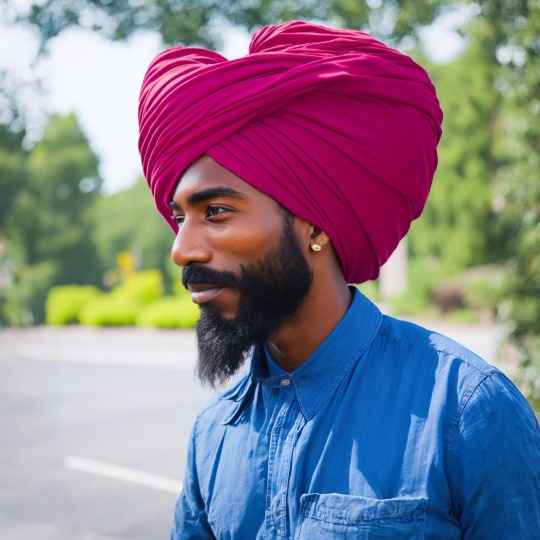
Phetas: Special turbans worn for religious purposes.
There are numerous types of phetas which are being used in different places across India for different purposes.
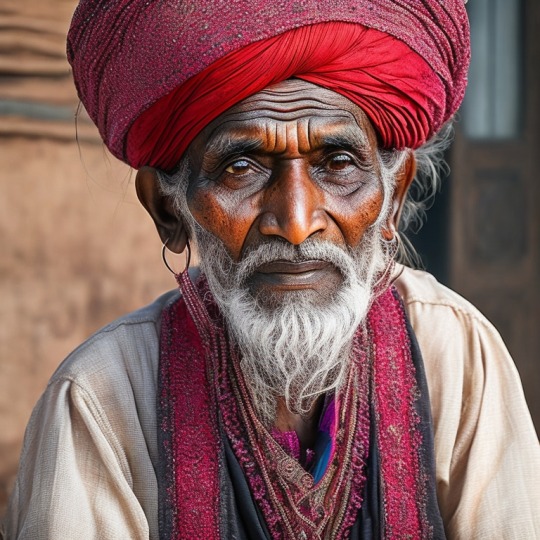
Peplon or chiton: Layered clothing made of linen and wool, adjusted according to weather conditions.

Man-buns and short or shaved beards were popular styles

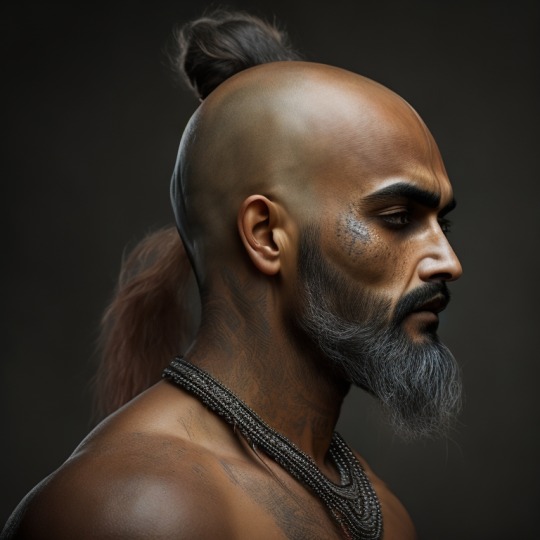
Clothing and Style for Women:
- Sari: A long piece of cloth draped around the body and over the head, showcasing elegance and grace
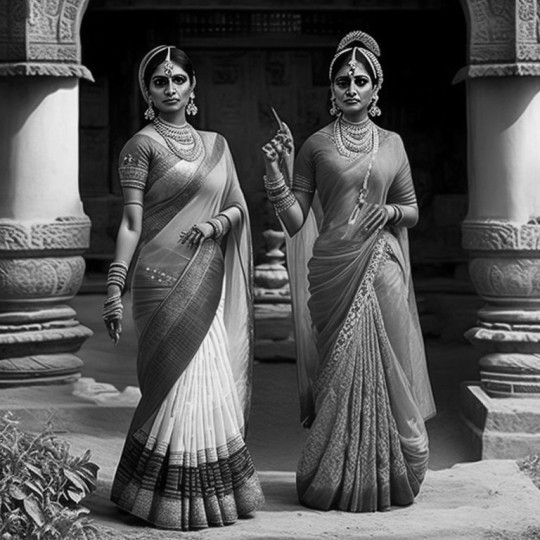
Knee-length skirts paired with intricate jewelry like bangles, earrings, and beaded necklaces.
- Elaborate jewelry made of stones, animal claws, feathers, and shells.
- Handloom textiles woven by skilled artisans.

- Gold ornaments, particularly worn by upper castes.
Sirradai: A short lower garment made of handspun cotton and silk.

Traditional Colors Used in Ancient Indian Clothing:
Ancient Indians were adept at dyeing clothes, and specific colors held symbolic significance:
- Ivory, jasmine, August moon, August clouds after the monsoon, and the color of the peacock's neck were significant traditional colors.
- The Vedic treatise Vishnudharmottara described these hues.
Traditional clothing of india
Men wore a variety of garments depending on their region, occupation, and social status. Some common examples include:
Lungi: A simple garment made of a single piece of cloth wrapped around the waist and legs, similar to a sarong.
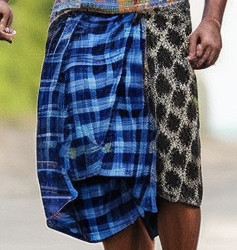
Veshti: A long piece of cloth wrapped around the waist and legs, similar to a dhoti but without the pleats.

Angrakha: A long tunic with a V-shaped neckline that is worn over a dhoti or other lower garment.
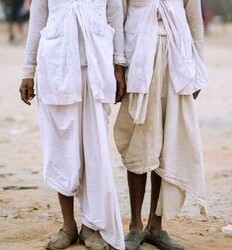
Sherwani: A long coat-like garment that was often worn for formal occasions.


Pajama: Loose-fitting pants that are typically worn with a kurta or other upper garment.
It's worth noting that the styles and materials of these garments varied widely depending on the time period and region in which they were worn.
Conclusion:
Ancient Indian clothing showcased the richness of culture, history, and artistry. Through the ages, men and women draped themselves in garments like dhotis, saris, turbans, and knee-length skirts, reflecting their customs, traditions, and social status. Warriors donned armor and wielded weapons as they protected their kingdoms. The vibrant colors derived from natural elements added splendor to the attire. The remnants of ancient Indian clothing, discovered through sculptures, paintings, and literature, provide us with a glimpse into the past, where clothing was not merely functional but also an expression of identity and heritage.
#beautyofindia #indianclothing #indianimpact #indianhertage#forgottenbharat
3 notes
·
View notes
Photo
In my Intro to Costuming class in college, we had a project where each person had to pick a Single-Piece style of historical clothing and model how it was assembled on a half-scale mannequin.
Pretty much every culture in history has at least one of these. Not just because it's easy, but because it's waste free. If you're gonna build a garment from plant to finish, you're not gonna cut shit off of the cloth and throw it away. It also means you don't have to resize anything if you grow or change body shape.
Some other examples:
Poncho (Central and South America)

Thawb (MENA)

The classic Loincloth (everywhere)

Kasaya (Buddhism)

Antariya (India)

Sarong (Southeast Asia)

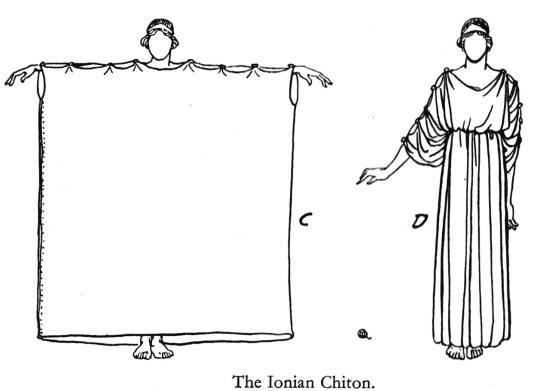

Costume. Chitons.
757K notes
·
View notes
Text
Sarees for Women: An Icon of Elegance and Tradition in Women's Attire
In the vibrant tapestry of India's cultural heritage, few garments are as iconic and versatile as the saree for women. Worn by women across the country, this elegant drape is not just a piece of clothing but a symbol of tradition, grace, and timeless beauty. In recent years, the saree has transcended its traditional boundaries to become a global fashion statement, captivating women worldwide with its allure and charm.

Originating from the Indian subcontinent, the women saree has a rich history that dates back thousands of years. It is believed to have evolved from the ancient "sattika" and "antariya," which were draped garments worn by women in early civilizations. Over the centuries, the saree has undergone various transformations in terms of fabric, design, and draping styles, reflecting the diverse cultural influences of different regions in India.
One of the most fascinating aspects of the saree is its ability to adapt to changing times while retaining its traditional essence. Today, women have a plethora of options when it comes to choosing a saree, ranging from traditional handloom sarees like Banarasi, Kanjeevaram, and Chanderi to contemporary designs that blend modern aesthetics with traditional craftsmanship.
The allure of the saree lies in its versatility, making it suitable for a wide range of occasions, from formal events like weddings and festivals to casual outings and everyday wear. The sheer variety of fabrics, colors, and embellishments available in sarees makes it possible for women to express their individuality and style in a unique way.
One of the reasons for the enduring popularity of the women saree is its ability to flatter women of all ages, body types, and skin tones. Whether draped in a classic silk saree for a traditional look or a trendy georgette saree for a modern twist, women can always find a saree that complements their personal style and enhances their beauty.
In recent years, the global fashion industry has taken notice of the saree's timeless appeal, with designers from around the world incorporating saree-inspired elements into their collections. From the red carpets of Hollywood to the catwalks of Paris, the saree has made a splash on the international fashion scene, cementing its status as a truly iconic garment.
Despite its global popularity, the saree remains deeply rooted in Indian culture and tradition, serving as a symbol of grace, femininity, and heritage. For many women, wearing a saree is not just a fashion choice but a way to connect with their cultural identity and heritage, passing down the tradition from one generation to the next.
In conclusion, the saree is much more than just a piece of clothing; it is a symbol of India's rich cultural heritage, a testament to the timeless beauty of women, and a canvas for artistic expression. As it continues to evolve and adapt to changing times, the saree remains a timeless classic that will always hold a special place in the hearts of women around the world.
1 note
·
View note
Photo




सामने के कक्ष का द्वार खोले आम्रपाली मुस्कराती वहाँ खडी थी । उस ने मपरी ढंग की साडी पहनी थी सर्वसी कंचुकी से अत्यन्त बारीक चीनी शुक के अधोवस्त्र से उस की आधी देह ढंकी थी । लंका के बड़े बहे समान और तेजस्वी मोतियों की माला इस के ग्रीवा-प्रदेश में भूल रहीं थी : महिम मेखला, हीरे के कुंडल और रत्न जटित नूपुर-इन आभूषणों से आम्रपाली का सौंदर्य ... Bhāratī (1956).
Amrapali stood smiling at the open door of the room opposite. She had worn a mapari* style saree, of the whole apart from the kancuki** half her body is covered by a very thin Chinese silk lower garment. Lanka’s lustrous pearl chains swing around her neck. A fine girdle, earrings of diamond and gem - studded anklets, from these ornaments Amrapali’s beauty.. .Bhāratī (1956).
Above translation by me, the text was a bit garbled and incomplete so I am uncertain about certain phrases but you get the gist.
Screencaps are from Amrapali (1966). The costumes of Amrapali were considered daring at the time, though probably modest in view of the actual Amrapali’s times. Vyjayanthimala mentions in her autobio that the costumes were skin fitted and used thin fabric to give an illusionary effect. The costumes were designed by Bhanu Atahiya but it’s likely dance costumes were by Aiyyelu (India Today, 2002).
The reference to Chinese silk in the 1956 text is based on historical sources, Chinese silk was prized in Ancient India,
A lot of lustrous and pale bindis in the movie, the one in pic 2 is evocative of sandalwood which was extensively used for decoration in Ancient India.
*mapari, I couldn’t find any references to this word. Is it a regional style of saree or a drape, not clear from text or google.
**bodice.
#ancient india#6th century bc#amrapali#indian cinema#historical drama#indian costumes#historical costumes#kancuki#adhovastra#antariya#my translation#patriotism#indian republics#bindi#historical saree#chinese silk#its not wholly accurate#but they have gone all out for Vyjanthi's costumes#bhanu athaiya
251 notes
·
View notes
Text
Desi Fashion: Inspo + Romance Tropes
Bollywood clichés, but make it fashion.
Outfit: 24-kali anarkali or peshwaz with extravagant zari work, opulently covered in jewels. Do not forget the passa/jhoomar. Gold is an evergreen choice of color, but any rich color that complements your radiance will be good to go.


Appropriate for: Performing classical dance in the imperial court in front of the emperor, who’s absolutely smitten at this point.
.•.•.•.•.•.
Outfit: Embroidered all-white kurta and salwar (Anarkali + churidaar is another option) with colorful bandhani dupatta.


Appropriate for: tearing a piece of your dupatta to cover the wound he got white trying to save you from goons. Hey, hey, we’re talking about clichés.
.•.•.•.•.•.
Outfit: Ajrak kurta with ripped jeans, Silk thread bangles you bought from Jaipur and colorful pompom earrings you bought from sarojini nagar. Jacket with Kutchi embroidery optional. Modern desi bourgeoisie chic/star plus bahu before becoming a bahu.
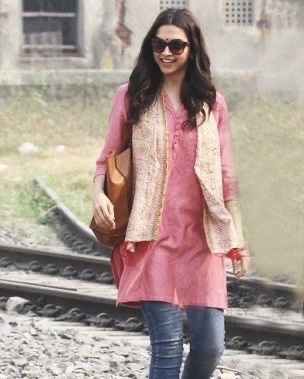

Appropriate for: Highly suitable for college or to make those trending “that girl” Instagram reels.
.•.•.•.•.•.
Outfit: A set of uttariya, antariya and kayaband, with flowers tucked in your long hair. My personal favorite.
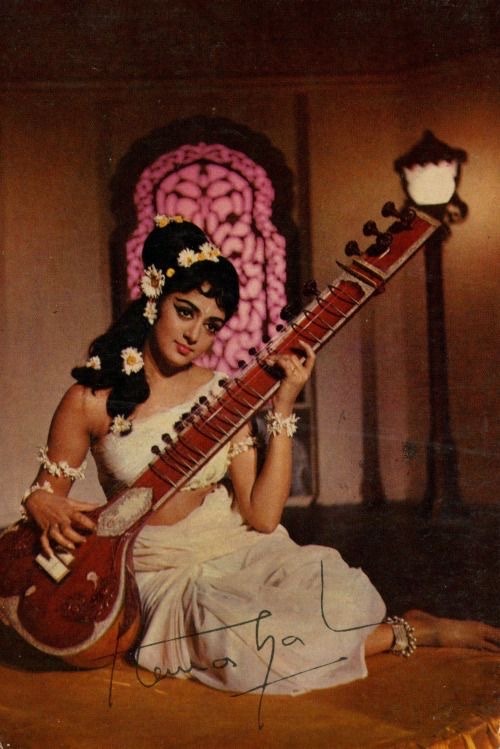

Appropriate for: Living in a small hut by a waterfall in the forest where you ( a.k.a. a mysterious maiden) rescue a wounded prince with your resplendent knowledge of jadibuties who ends up falling in love with you. ok ill stop now.
45 notes
·
View notes
Text

Now on fashion sets! Actually I'll do more of her clothes(like dancer outfit,priestess and etc.) but still had no idea so here's what Sita will apparently wearing XD
Notes
1. For the underwear,since they had no panties in ancient India so I have to added an item called "Araimuthi" of South India or as in Thai called "Chaping"(จะปิ้ง/จับปิ้ง), a metallic undergarments for girls to replace it (for the data of Araimuthi,you can click here)
2. Vanvas 1.0(aka pre-Yuddha) and Vanvas 2.0 are different; 1.0 Sita wearing a Kasaya(Kasava in Pali) which have a similar color to a bhikku/bhikkuni's robe and having a panther/leopard's hide here(based on Thai ver, here I will show)
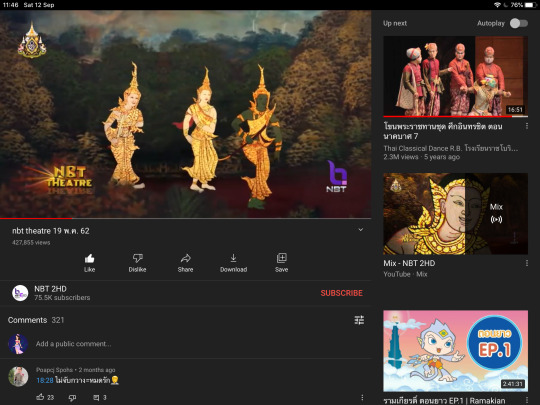
While 2.0, the tone is "sad" and symbolizes grief and solitude,it seems like she's wearing old clothes or the colorful parts of her life had been "worn out"
3. Ayodhaya's bride based from this animation called "Xia Wudong the Kind boy"(Here, spoiling that it's an Uyghur folktales) It's the princess' dress.
4. And the 3 other fashion sets are when she's in Mithila,plus that she and her sisters would likely influenced the women of Ayodhaya to changed from the Persian-ish (cloak,in the FRIKKIN hot plains and steppes)to something chilly(Stapidhana,Antariya,Sari and etc.) :3
BONUS❤️❤️❤️

5 notes
·
View notes
Photo
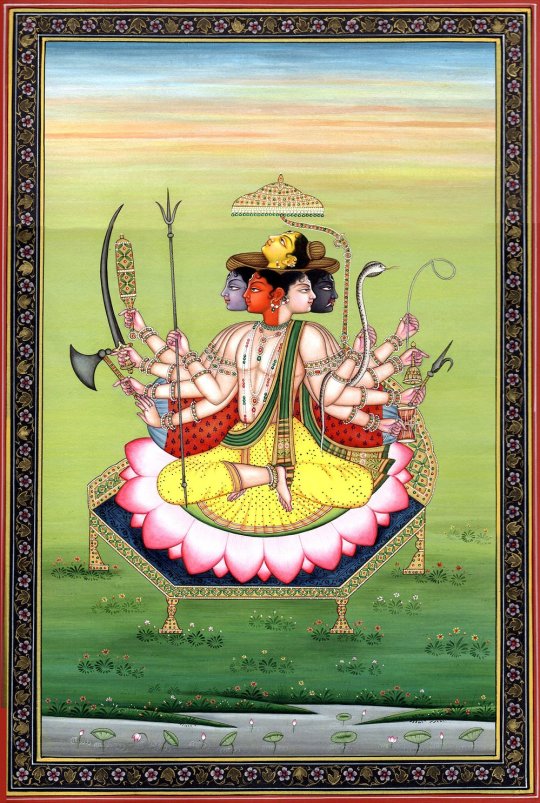
Via Exotic India: Pancha-Mukha Shiva - Water Color Painting on Paper Artist- Kailash Raj
This miniature, a contemporary masterpiece rendered against a turquoise green background in the late 18th century Kangra art style, represents five-faced form of Lord Shiva usually known in the Shaivite tradition as Sadashiva.
This representation almost exactly pursues the iconographic convention of Shiva’s Pancha-mukha form as it initially evolved in early sculptures which have four of his faces carved on all four sides believed to guard all four directions, and the fifth, above the other four skywards-facing. The representation is simply exotic for in miniature paintings the canvas does not have the stone's multi-dimensionality to portray four directions and to plant a fifth, above them. However, this miniature, reproducing a great masterpiece from Kangra in hill region of late eighteenth century, so manipulates the canvas that it imparts a strong sense of multi-dimensionality.
Corresponding to his five faces Shiva’s anatomy has been conceived with ten arms, all carrying his one attribute or other : the right side hands carrying four – trident, thunderbolt ‘mustaka’ or heavy-blow-beat rod, sword and axe, the fifth being held in protective posture – ‘abhaya’, and the left, snake, noose, bell, goad and ‘damaru’, the double-drum. All five heads have their independent hair but in addition also a large basket-type massive ‘jata-juta’ – matted coiffure, cradling on it the fifth head. Except a snake carried in one of his hands merely as an attribute he has neither his usual elephant hide, tiger skin, serpents crawling on his body, skull-garland or anything revealing his ferocious form. On the contrary, in everything : from the iconography of his form – his large fluid eyes, sharp features, hair-style and the style o ear-ornaments, to his modeling and moonlike translucent body-colour, he reveals a strange feminine look.
Instead of seated on his usual tiger-skin this sublime form of the Great Lord has been conceived as seated on a large double lotus installed on a beautifully inlaid hexagonal chowki in cross-legged posture wearing a delicately printed ‘antariya’ – lower wear, reflecting a sari’s look. The figure reveals great benignity and rare divinity. The chowki, enshrining his figure, besides embedded with precious stones, has a high back and an umbrella canopying over Lord Shiva’s form, though like the entire Creation it also falls short of his expanse. A large bolster in maroon-red affording pleasant contrast to his figure’s pearls-like translucent white and his yellow ‘antariya’ is, like the lotus-seat, an element not usually represented in Shaivite iconography. In exact miniature tradition all five faces are in profile. The absence of his mount bull is noticeable. The form of his third eye has been conceived like an ornamental mark on the forehead, not like a feature that awed by its strange grotesqueness.
In Shaivite thought, Shiva is one of the Gods-Trio but also the ever present Sadashiva. The Pancha-mukha cult has broadly two lines, though both accept that it is the manifest form of Sadashiva – the ever present Shiva. Under one tradition, it is in his ‘ling’ form that Shiva has his five faces and that it is the ‘ling’ which is his ultimate manifestation. The ‘ling’ is the ‘jyoti’ – the potential flame, which represents ‘pancha-bhutas’ – the five cosmic elements or constituents of the cosmos. Thus, it is out of him that the cosmos is born. The other tradition is not much different. It conceives Shiva as Ishan, or as ‘Panchavaktramatrinetram’, that is, Shiva combines in him Tatpurusha, Vamadeva, Aghora, Sadyojata and Ishan, representing respectively the wind, the water, the fire, creative function, and the space. Thus again Shiva's five heads manifest the five cosmic elements and functions.
This description by Prof. P.C. Jain and Dr. Daljeet. Prof. Jain specializes on the aesthetics of literature and is the author of numerous books on Indian art and culture. Dr. Daljeet is the curator of the Miniature Painting Gallery, National Museum, New Delhi. They have both collaborated together on a number of books.
Exotic India: Pancha-Mukha Shiva - Water Color Painting on Paper Artist- Kailash Raj
13 notes
·
View notes
Note
Name is on you lol...
I'm not sure about the house entirely, but blue is (obv) my first preference
Basically the subjects' preference is from the colours: Antariya main colour > Whatever cloth is round their necks (not in pic) > That thing tying up the Antariya > Antariya border colour
So, for him, it'd be like: Bachelor/Master in Blue Subject stream, with Major in Red Subject and Specialization in Yellow Subject and Minor in Green Subject
That'd be eight subjects in total per day, two from each Branch/Stream
Martial Arts and War
Pol. Science
Medical Science and Alchemy
Maths
EVS
Zoology, Botany and Mycology
Grammar, Languages and Literature
Arts and Music
Tantra and Siddhis are high level stuff for Higher Secondary, only if Saraswati deems the students capable of pursuing these subjects.
Yoga, Yajnas and stuff are mid level, and depends on the students and teachers' choice
I made an OC for Kanya-Saraswatism:

We could have the clothing represent the students' house or branch or subject preference perhaps?
I could have included a red cloth around the shoulders too, but eh...
Also, you know those beads around the wrists some people wear (Like Shiva)? We could use that as a timetable, with different colour beads for different subjects. (10:30 am gathering up, 11 am actually starting classes, upto 3 pm, 30 mins per class)
YOO THAT'S SO COOL (I should probably name one too)
DOES HE HAVE A NAME OR SOMETHING???
So he's in the blue branch/house?? What are the subjects???
I think the red cloth would work for more professional cases but normally it's fine
Those black-grey-brown-white ones??
OHH YEAH THAT'S A COOL IDEA
I like the timing they won't have to wake up too early 👹🗿✨
3 notes
·
View notes
Text
Latest Lehenga Designs | Collection | Indian Skirts Online - faberas
Crowned Queens of Ethnic Fashion A precise ethnic dresser is incomplete without a Collection of resplendent Lehenga or lehengas that talk volumes about your personal style and panache. For Desi Divas who don’t experience oh-so-comfy in the dainty drapes of a stunning Saree, Lehenga comes forth as the knight in sequined or published or embroidered armour! Whether it is a Sangeet or a Shaadi, a stunning Lehenga will make you stand out within the fashion spotlight like no other ethnic outfit ever will.
Hence, we at Craftsvilla like to consider Lehengas as the undisputed, topped Queens of any coveted ethnic closet. The evolution of a Lehenga has been pretty phenomenal over the last few years, many way to our very own Bollywood’s obsession with this outfit! An elegant Lehenga Choli has now long gone on to end up an international phenomenon. Such is the recognition of this ensemble that each Indian bride longs to get via the huge fat Indian Wedding in Lehengas immediately out in their childhood dreams. And that’s where we come in- to make those dreams a reality. Craftsvilla is aware the essence of donning ideal Lehenga- bridal or now not.

As a result we are constantly striving to inventory up on latest lehenga designs and lehenga online that come in a whole lot of shapes, styles, sizes and of path the ever evolving trends! The Lehenga History Chronicle Since time immemorial, a conventional Lehenga Choli has continually been an integral part of the auspicious Bridal trousseau.
Now, this outfit has developed taking various fashionable forms and becoming a major part of a woman’s wedding cloth cabinet; be it a Bride or her bridesmaids and besties! The Indian Skirts a part of the Lehenga derived its form from ‘Antariya’ The Antariya can be defined as a garment stitched on one facet in such a manner that it could be gathered across the waist with a girdle or drawstring after which paired with either a blouse, jacket of the imperative matching Choli. Then got here the Dupatta to make the Lehenga shine in style! It changed into the Mughal technology that honestly proved to be a boon to the evolution of a Lehenga Choli outfit.
This ensemble have become a Royal staple, donned with the aid of Queens, Princesses and Artisans alike, adorned via the conventional Jewellery like Mughal Paasa. Even in certain Southern components of India, this outfit changed into popularly donned as ‘Pattu Pavadam’ and was traditionally worn with the aid of ladies earlier than they hit puberty.
Shop Now:- https://www.faberas.com
Source:- https://faberas.livejournal.com/663.html
0 notes
Text
The Epitome of Indian diversity and Culture
The saree is a word from Sanskrit which means of strip of cloth. In ancient India saree was called Jatakas or sattika. You can buy Traditional saree online just by browsing it through the websites. The history of Indian clothing which flourished during 2800 – 1800 BC in few parts of Indian subcontinent. The first thing was cultivated and made was cotton. At the beginning only red, Indigo and turmeric silk was woven during 2450 – 2000 BC. Earlier only the Indus valley priest statue used to drape a part of cloth as their attire. Let’s discuss something about the traditional saree drapes in India.
Saree was invented from a three-piece attire which was a lower garment which was called Antariya, Uttariya was worn over the shoulder or head. Antariya used to like a dhoti which was draped through the legs and tucked behind the back. By 6th century this three piece was known as a complete attire. Decorative pleats in front of legs, and a ghoongat which is known as a dupatta. Similarly, stanpatta was converted into a choli. Traditional silk sarees online are also a progresses form of this 3 piece of attire. Then in 2nd century the Antariya and Uttariya was merged into one piece turning it into a saree. An old Kadambari and Tamil Poetry describes a women draped in a saree. The meaning of saree was that she should be draped in a way her navel would never be visible.

Chiffon to make you look Lustrous
Chiffon is a French word, which means a cloth which is lightweight. This chiffon is made from pure silk earlier. It was one of the type of Silk family. Then there was a new version of chiffon was invented. And then polyester chiffon was introduced and instantly it became popular because of its availability and very reasonable price. Chiffon saree is so fine if you see it through magnifying glass it will look like fine net or mesh that is the reason it looks very transparent. Plain chiffon sarees will make you fall in love with them.
Chiffon is not only used for sarees but it is also used in making an upper layer in evening gown. Designer use this to fabric to make blouses, ribbons and scarves as well. This material is most commonly used Because of its flow which gives you good curve. Just like crepe fabric which needs a lot of careful handling, chiffon also is very light and slippery texture due to its delicate texture. Chiffon needs a hand wash because it’s very delicate. You need to wash it gently, rubbing is not the option for sarees chiffon. The hand wash is the best option instead of putting it to dry cleaning or in washing machine. Most of the times you don’t need ironing for these sarees, but still if you think that you need to remove slight crease, you can use light iron or you can spread a cotton sheet over saree and iron it instead of ironing directly with iron.
2 notes
·
View notes
Text
Changing fashion on stamps part 1
The great things about fashion are that it always looks forward- Oscar de la Renta! The universal language which conveys the though without speaking is fashion. Since eons fashion has changed according to society’s needs. For many, changing fashion is also a cultural status or style statement. Fashion changes with age, profession, location, and class order. Fashion is basically defined by the cloth individual wear. In India different kind of clothes and costume has evolved through the ages. To mark this phenomenal development in the traditional and culture quote of Indian culture India issued a series on stamp depicting changing fashion on stamps also know as fashion through the ages.
Indus Valley – Mauryan and Medieval period fashion
The first record of fashioned cloth as a status or style statement rather than a part of the basic need is trace to fifth millennium BC in the Indus valley civilization. It was the first time truly when the cloth was fashioned worn as a status or style statement rather than a part of basic need.
Indus-Saraswati valley
India was the first place where cotton was cultivated and used, it evidence in the Harrapa culture in the Indus-Saraswati civilization. The remnant of the ancient cloth is discovered from sites. The earliest evidence is found from the figures of the odder goddess found from the site of Mohenji-Daro wearing an elaborated headgear supported by a pair of bands, tight-fitted tunic, and skin fastened with waistband using medallion link clasp.
Another is the priest-king sculpture with its head-band and leaf shape design on its shoulder indicating a fort of body-cloth. Another sculpture was found with long-robs. The clothing system in Indus-valley was related to people’s social and economic status. The upper class wore fine muslin garments and silk fabric while the common wore garments made up of local fabric.
India post introduced fashion on stamps series in 2019 to mark the origin of the cloths. The stamp depicts the priest-king. The purpose to introduce to these stamps was to convey the history of India’s diverse costumes and garments origin and history.
Mauryan Period
After the decline of the first civilization the later use of cloth become prominent during the second civilization ( Mahajanapada) and Mauryan time were unstitched cloth was used. In the later period, Kushan bought the concept if stitched cloth with them. It was also a whole door opened for a new concept of fashion.
The most common attire of people in this period was antariya which they used to wear as a lower garnet. A cloth was covered in ‘lehenga’ style to form a tubular skirt. An embellished long piece of cloth wrapped around the waist pleated into the antariya was called ‘patka’. Meganthese introduces about the coloring and hand-print of cloths. As an upper garment people grab was ‘Uttariya’. The difference of cloth in the way it was worn, as the unstitched cloth it was easy o manipulate it.
The stamp depicts the dawarapala and the painting of the men with Maurya-sunga attire. The period saw the rise in the trade and economic status of the people and the country. The fashion on stamps was illustrated vividly and beautify.
Medieval Fashion
The traditional attire of India that we see today has its great influence during the Mughal period. The concept that we called fashion was quite popular with the Rajputs and Mughal during that time. They exerted great importance on the dressing style. Men wore Jama which was considered as the main royal grab of Mughal emperor, patka to keep the jeweled sword around the waist of Jama.
The Patka is a type of girdle made of a fine fiber that is hand-printed, printed, or embroidered and choga embroidered. Mughal women wore a large variety of ornaments from head to toe. Their costumes generally included Peshwaj, Yalek, Pajama, Churidar, Dhillia, Garara, and Farshi which included head ornaments, anklets, and necklaces.
India Post issued a stamp depicting the most stylish lady of the Mughal period wife of Emperor Jahangir, Nur-Jehan wearing beautiful robes, headgear, and ornament which rose in her hand. This stamp is spearheading all stamps in fashion on stamps in the whole fashion through the age’s series.
Modern Period(Awadh & Princely States)
After the Mauryan, there were many dynasties that ruled India but there were one Kushans who bought the concept of stitched cloth in India. Till the Mughal period came India saw a vast changs in its cultural and clothing style. It was the most flourishing period for the trade due to which the influence of the Middle East came to India. Indians saw the rise and fall of many power every dynasty bought some different from them. Till the 18th century came India was under British rule but still the rise of fashion was its highest as the royalties of the Princely States indulged themselves in the stigma called fashion.
Awadh Period
Historically the most important place in terms of fashion in Indian culture is Awadh. For centuries, the Awadhi style of dressing has intrigued fashion enthusiasts. Its fabric, embroideries, and precision in design, influence connoisseurs of fashion and style enthusiasts alike.
The Nawabs were predominant in the 18th and 19th centuries especially due to the evolution of fashion. The Lucknow aristocracy spent lavishly on their dresses and how they are worn. They had an impact on the dressing style of the country and textile.
India Post issued a stamp of the Awadh period cloth; it illustrated the famous Ghaziuddin Haider making these stamp phenomenal assets in the series of fashion on stamps.
Princely States
Next were the royalties of the Indian princely state, they display the evolution of fashion through the fusion of local traditional dress with the trend from other parts of the country. The aristocratic Rajput men court dresses included ‘angarkhi’, ‘pagdi’,’churidar pajama’, and a belt. The special thing was Dhoti, it was worn differently across the different princely states. This period also saw the fusion of the diverse Indian attire with the trends of European attires.
India Post illustrated different attires of various Princely States. The attires of the Sikh royalty during the British Raj to Maratha royal families are seen on this stamp. These stamps give a vivid aspect of Indian fashion during the late 18th to early 19th century making a key collectible for series fashion on stamps.
In Indian clothing changes from region to region, it has so many variants that a particular region may have different forms of wearing a headgear. The style of Dhotri of wearing an Angarakha is also different. The way of wearing sari also defines the cast and social status of women. The ornaments also play a vital role in this. India Post has issued various stamps marking this beautiful and different Indian fashion changing from eons. These stamps are first in the series only brushing through an aspect is India changing fashion
Share
The post Changing fashion on stamps part 1 appeared first on Blog | Mintage World.
0 notes
Text
New Post has been published on Titos London
#Blog New Post has been published on http://www.titoslondon.in/kerala-piravi-history-of-the-simple-yet-rich-kerala-kasavu-sari/
Kerala Piravi: History of the simple yet rich Kerala kasavu sari
Written by Soumya Mathew | New Delhi | Published:November 1, 2017 2:54 pm The crisp cotton cream and gold six yards of Kerala kasavu that women drape during the main festivities of the state and even in weddings exude a sense of elegance and richness even in its simplicity. Top News
Actress Rekha gives Rs 2.5 crore from her MP funds to Rae Bareli
New York truck attack: Investigators scour driver's background
NTPC boiler explosion LIVE: Four dead, scores injured at Unchahar plant in Raebareli
Be it Kerala Piravi, Onam or Vishu — the traditional kasavu mundu sari that women wear add to the colour and vibrancy of celebrations. The crisp cotton cream and gold six yards that women drape during the main festivities of the state and even during weddings exude a sense of elegance and richness in its simplicity. But more than featuring in a number of beautiful paintings by Raja Ravi Varma, a costume-wear of performers of traditional dances such as Mohiniattam and Kaikottikalli and the traditional festive wear, the kasavu mundu has a history that can been traced back to have started a handloom industry revolution and origins in the Buddhist era. The golden zari work on the sari border also show how the royal women of Kerala cleverly tried to use gold in fashion in ways other than just jewellery.
It is believed to have been introduced in Kerala under the rule of His Highness Maharaja Balaramavarma and his chief minister Ummini Thampi in the early 19th century. According to ‘Study and Documentation of Balaramapuram Sarees & Fine Cotton fabrics’, a research paper, the leaders brought about a revolution in the handloom industry by inviting members of the ‘Shaaliyar’ weavers’ community from Nagercoil in Tamil Nadu and offering them a place of respect and pride within the state. The weavers reciprocated by showing their gratitude by successfully using the cotton available in the market to make hand-woven cotton garments for the royals of Travancore. The sudden rise in demand for hand-woven saris caught the attention of the Dutch and Portuguese exporters as well.
A portrait of Mahaprabha Thampuratti of Mavelikkara, Raja Ravi Varma’s daughter holding her son Marthanda Varma (Source: Wikimedia Commons)
Interestingly, the barter system, which became common after Vasco da gama reached Kerala, involved the exchange of gold for spices in return. The upper class women and the royals saw this as an opportunity to make use of the gold by weaving it into the hand-woven saris. Also known as Kerala kasavu, the origin of the traditional sari has also been traced to ancient Buddhist literature.
While the kasavu sari is a one-piece cloth, the mundu-neriyathu which it closely resembles and takes after, has references in Buddhist literature, wherein it is known as ‘Sattika’.
The mundu is referred to as antariya in the Buddhist context and the neriyathu (the cloth covering the upper part of the body) is referred to as uttariya in the ancient Buddhist-Jain texts. The gold rimmed borders of the sari has long been speculated to be inspired by the Graeco-Roman costume called ‘palmyrene’ — an attire that consists of a piece of long unstitched cloth called ‘palla’ that had a coloured or designed border, which was worn over a long, flowy garment.
Explaining how a traditional wear is highly influenced by the colours and vibrancy of the region, Aswathi Thirunal Gauri Lakshmi Bhai, the current princess of the Travancore royal family, compared Kerala’s kasavu with the traditional wear of Rajasthan.
“For example, the clothes worn in Rajasthan are very colourful and vibrant. Because there are deserts in that region, the women wear jewel-toned, vibrant hued-clothes. On the other hand, Kerala is brimming with colours, especially green. So it is okay if the clothes aren’t colourful enough. This is why the colour of the kodi (the kasavu mundu) is very dear to us,” she told iemalayalam.com.
The Kerala kasavu sari now ceases to be just identified as the simple traditional wear of women in the region. With more and more actors warming up to the cream and golden elegance, it has now become more of a fashion statement, even in all its simplicity.
Study & Documentation of Balaramapuram Sarees & Fine Cotton fabrics: The Pride of God’s Own Country (http://handlooms.nic.in/writereaddata/Balaramapuram%20Sarees635701520378938440.pdf)
For all the latest Lifestyle News, download Indian Express App
© IE Online Media Services Pvt Ltd More Top News
Rahul Gandhi in Gujarat LIVE UPDATES: India doesn't need certificate from foreign institute, says Cong VP on 'ease of doing business'
PHOTOS: Shah Rukh Khan spends birthday eve with Alia Bhatt, Sidharth Malhotra, Farah Khan and Karan Johar
0 notes
Photo
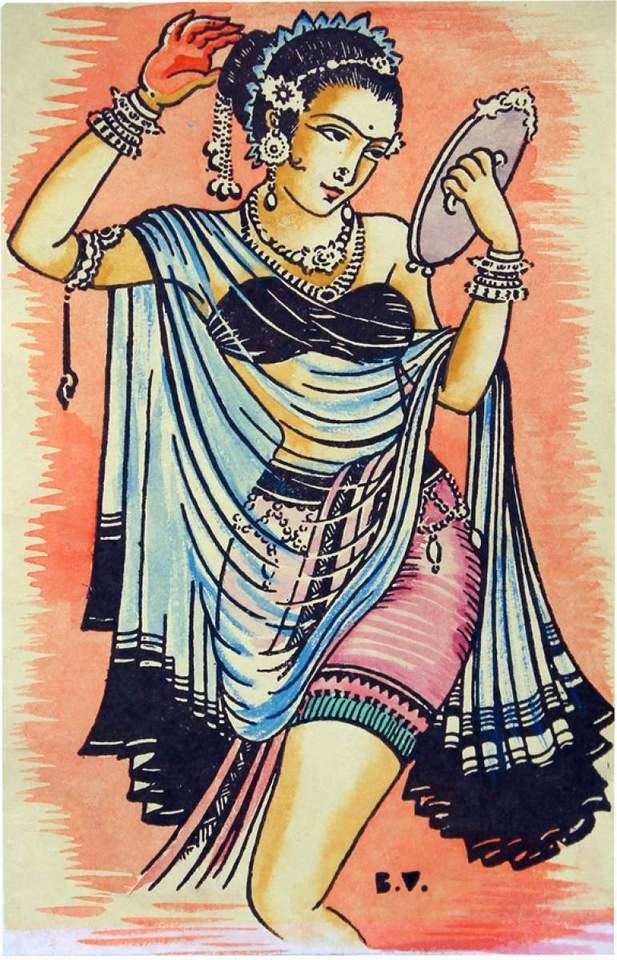
Of course it is impossible in cold countries to display the beauty of ornaments, which have to be worn on the bare body, for if they did so they would suffer severely from cold. So the fondness for ornaments is transferred to, and is satisfied by, the niceties of dress. As in India the fashions in ornaments change very often, so in the West the fashions in dress change every moment. Civilisation and Dress, Swami Vivekananda: Complete Works.
Vivekananda’s perspective on the Indian use of jewellery and how it has multiple meanings regarding style, status and the like.
Today is Yuva Diwas/National Youth Day.
The artwork is Palli Badhu (Village Bride) - described as a watercolour on silk, in the wash style that features a bride with embellishments against a lightly coloured sari - by the Odia painter Bimbadhar Varma. Via IPCA.
#swami vivekananda#national youth day#indian art#vintage art#village bride#indian jewellery#odia art#uttariya antariya#indian costume#bimbadhar varma
195 notes
·
View notes